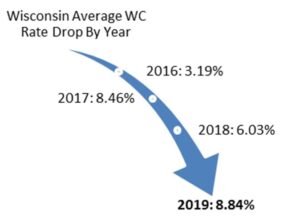Medicare Advantage and Medicare Part D: A New Compendium of Policy Proposals

By Jack Hoadley, Rachel Schmidt, and Leila Sullivan
For the first time in 2023, over half of all Medicare beneficiaries were enrolled in a Medicare Advantage (MA) plan – the alternative to traditional Medicare, under which Medicare pays sponsors of private health plans to deliver Medicare benefits to enrollees. Medicare beneficiaries have an extensive choice among MA options that use networks of providers and often limit the use of care by requiring prior authorization for certain services or medications. The vast majority of beneficiaries who participate in traditional Medicare are enrolled in stand-alone private plans to receive prescription drug benefits through Part D (MA enrollees receive drug benefits through their MA plan).
Private plans thus are an integral part of Medicare with 34 million beneficiaries enrolled in MA plans and another 23 million enrolled in Part D drug plans. In 2023, 58 percent of just over $1 trillion in total Medicare spending was used to fund the MA ($467 billion) and Part D programs ($131 billion).
Compendium of Policy Proposals
Overall support for the Medicare program is strong, and similar proportions of beneficiaries in traditional Medicare and in MA plans say their coverage fully meets their expectations. But there is more debate over how MA plans are paid, whether some plans constrain both low-value and high-value care, and whether the provision of supplemental benefits only to MA enrollees is inequitable or a tradeoff that beneficiaries make when accepting plans’ limited provider networks and use of prior authorization for some services.
While the promise of Medicare Advantage is that care will be delivered more efficiently and thus at a lower cost, it remains unclear whether that promise is fulfilled, given studies showing that Medicare pays MA plans more per beneficiary than in traditional Medicare. For Part D, the redesign of the benefit structure that is fully implemented in 2025 may alter the trajectory of higher drug spending, but it is too early to have that answer. Cost concerns are heightened in light of projections that the Medicare Part A trust fund will have a shortfall as of 2036 and that rising Part B expenditures draw increasingly on individual and corporate income tax dollars.
Many players in the Medicare policy world have ideas about how to improve the program, yet no one source has presented them all. With support from The Commonwealth Fund and Arnold Ventures, researchers with the Medicare Policy Initiative at Georgetown’s Center on Health Insurance Reforms (CHIR) created a comprehensive and timely web-based compendium of legislative and administrative proposals with the goal of supporting members of Congress, executive branch officials, their staff, and others in the policy community as they consider improvements to the MA and Part D programs.
The Georgetown team conducted a comprehensive review of recent congressional proposals, congressional and executive branch reports, and policy research and publications from stakeholders to identify policy proposals that reflect the range of ideas for transforming how private plans are used in Medicare. Using this literature review, we developed exclusion and inclusion criteria to create a set of policy proposals organized by related topics.
Proposals are included in the compendium if:
They are put forth by Members of Congress, congressional support agencies, executive branch agencies, think tanks, health policy academics, or advocacy groups. They were published within the past five years, with the exception of a few earlier proposals that are standing recommendations from the Medicare Payment Advisory Commission or budget options from the Congressional Budget Office. They are laid out with sufficient specificity that effects on beneficiaries or Medicare program spending have been or could be estimated. The ability to estimate costs or impacts may require a proposal’s author to specify some additional parameters but the core elements should be clear in the proposal. In the view of each proposal’s authors, the policy proposal is designed to make program changes that should help Medicare beneficiaries, improve Medicare data collection, foster transparency to inform beneficiary decision making, or generate savings to the Medicare program and taxpayers.
The compendium includes 70 proposals for both smaller-scale changes to how Medicare currently pays and oversees private plans, as well as larger-scale ideas that would take more time and political capital to put in place.
The web-based compendium is divided into domains for Medicare Advantage and the Part D drug benefit. Under each domain, proposals are grouped into subject categories. Users are able to look at a summary of the proposals in each category and then view specific details about any individual proposal, including links to original source materials.
For each subject category, we display a table with effects on beneficiaries in terms of access to plans, enrollee costs, supplemental benefits, and Part B premiums. This table also gives users a sense of the expected magnitude of federal savings or costs and identifies other affected stakeholders. Once navigating to the details page for each proposal, users will find more information, presented in a concise format.
Looking Forward
It is unclear whether Medicare will be high on the legislative agenda in 2025. The urgency of fiscal pressures or the desire to consider program improvements, however, may force action sooner than later. If so, our compendium offers policymakers and others a place to consider the range of policy proposals that affect Medicare Advantage and Medicare Part D. The compendium will be updated quarterly during 2025 to reflect new proposed ideas and any updated information about the listed policy options.
View the compendium here.
Learn more about CHIR’s Medicare Policy Initiative here.




